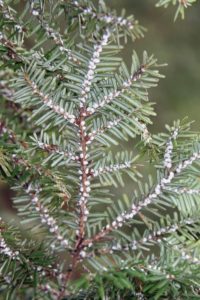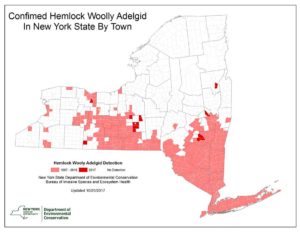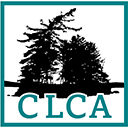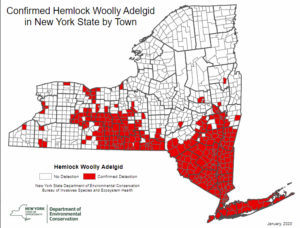
A major threat to our hemlock trees is the Hemlock Woolly Adelgid (Adelges tsugae) Native to Asia, it is a small, aphidlike insect that threatens the health and sustainability of eastern hemlock (Tsuga canadensis) and Carolina hemlock (Tsuga caroliniana) in the Eastern United States. HWA are most easily recognized by the white “woolly” masses of wax, about half the size of a cotton swab, produced by females in late winter. These fuzzy white masses are readily visible at the base of hemlock needles attached to twigs and persist throughout the year, even long after the adults are dead. For a valuable introduction see the New York State Hemlock Initiative site.
The NYS Hemlock Initiative has prepared a useful guide for the identification of Hemlocks and the Hemlock Woolly Adelgid , HWA Boat Survey Protocol, and a guide for hunters of HWA and what to do.
The Hemlock Tribune, Spring, 2019: newsletter from New York State Hemlock Initiative. For a recent scholarly study about HWA see the 2018 article by Samita Limbu, M. Keena, and M. Whitmore in the Journal of Integrated Pest Management.
Lake George Association has a useful webpage. including a high tech approach the Lake George Association is taking to monitoring the spread of HWA employing the use of airplane and satellite-gathered near-infrared imaging and radar technologies.
The Hemlock Tribune, Summer, 2021

Hemlock Wooly Adelgid: Educational Full Documentary: https://youtu.be/AupnMjYaI0Q
HWA found at Lake George, 2020: The Post Star, Times-Union.
PDF of Water Assessing for Woolly Adelgid.
The following are useful articles dealing with this threat:
New York Invasive Species Information
New York State Hemlock Initiative

